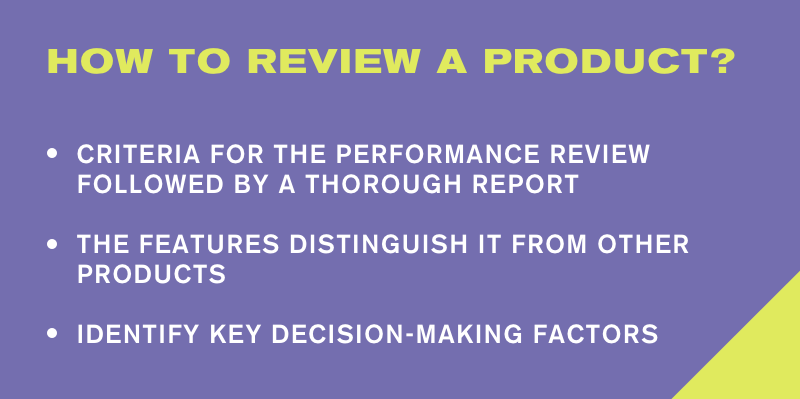15 June 2022
Colour Accessibility 101
Read More

Picture the scene: You’re looking at a pair of trainers online. You really want to buy them – but you’re not quite sure – and the reviews aren’t helping. What you really want to know, is the answers to questions like:
Which the reviews aren’t very forthcoming about.
As Emma mentioned in her latest article, eCommerce is here to stay. And, naturally, to further enhance the online shopping experience (and guarantee more retailers investing in its Ads), Google has recently rolled out a new update, that’s sure to help online shoppers everywhere.
Enter: The 2022 Product Review Update:
In April 2021, Google first mentioned its product review update, promoting content that shares in-depth product research. The second and the third updates were rolled out in December 2021, and March 2022.
What does this all mean?
The Product Reviews Update scrutinises thin and poorly-written product reviews, instead prioritising content that provides a user – that’s you – with insightful analysis and original research.
Mysterious as Google has always been, there’s no telling what ranking signals are used in these three updates. While defined as “not a core update”, the one-year revolution definitely has witnessed explicit rank shifts within the reviewing business. Displayed in the bar graph by SEMrush Sensor, we capture the aftermath following each update.

With Google relentlessly introducing updates, we are no strangers to its notoriously fickle weather. Yet the answer to the question “Are there rules we can apply to content production” is yes! Unexceptionally, all the pages you can find on Google obey the big three, the essential principles defining how Google assesses page quality. Presenting Beneficial Purpose, EAT and YMYL:
Now we’ve peeked behind the curtain to see how the page quality is rated, Google has generously provided guidance on how to improve upon these Product Review Updates.
For starters, reviews from actual users are mostly appreciated. But beyond the who, there’s how. Specifically, how your product review can be helpful on search. Google instructs product reviews to be detailed, unique and comprehensive. For instance, pros and cons, current updates, actual user experience and, of course, anything beyond what the manufacturer says.
Bigger picture? We believe that only when brands respond to reviews and communicate with their customers, can we really label the content relevant and reliable. User-generated content is a powerful asset to be leveraged in search, the legitimate collaboration between site owners (brands) and site visitors (customers) only strengthens Google’s opinion of reviews online.
In the wake of the first launch of Product Reviews Update, high-quality reviews have been awarded better visibility by Google. While credit goes to the review writers, on the other hand, they are naturally in charge of tackling the declined ones. So shall we talk about everyday expertise?
“It’s a safe space,” Google says, welcoming people with life experience to share their views and calling them everyday experts. However, bear in mind that it’s not a “just between you and me” situation. If anything, it’s another reminder of our being in this “I share, therefore I am” era. Nevertheless, because these updates are content-centred as well as user-centred, what to draw from your life experience matters equally to how you present that information.

How to convince Google and the readers that you are a real expert?

How to review a product:
The list does go on. For more boxes to tick, check Google’s high-quality product reviews guidelines. Overwhelmed as some of us might be, we should see this as an opportunity. There’s no reason why Google or we both can’t benefit from this change.
If you run an e-commerce store that relies on user-generated reviews, or if you run a review site, whether you’re overwhelmed with best practices or are deterred by SEO after many endeavours – the devil’s in the details and don’t we know it?


Still the same great data driven services, but now with a different name